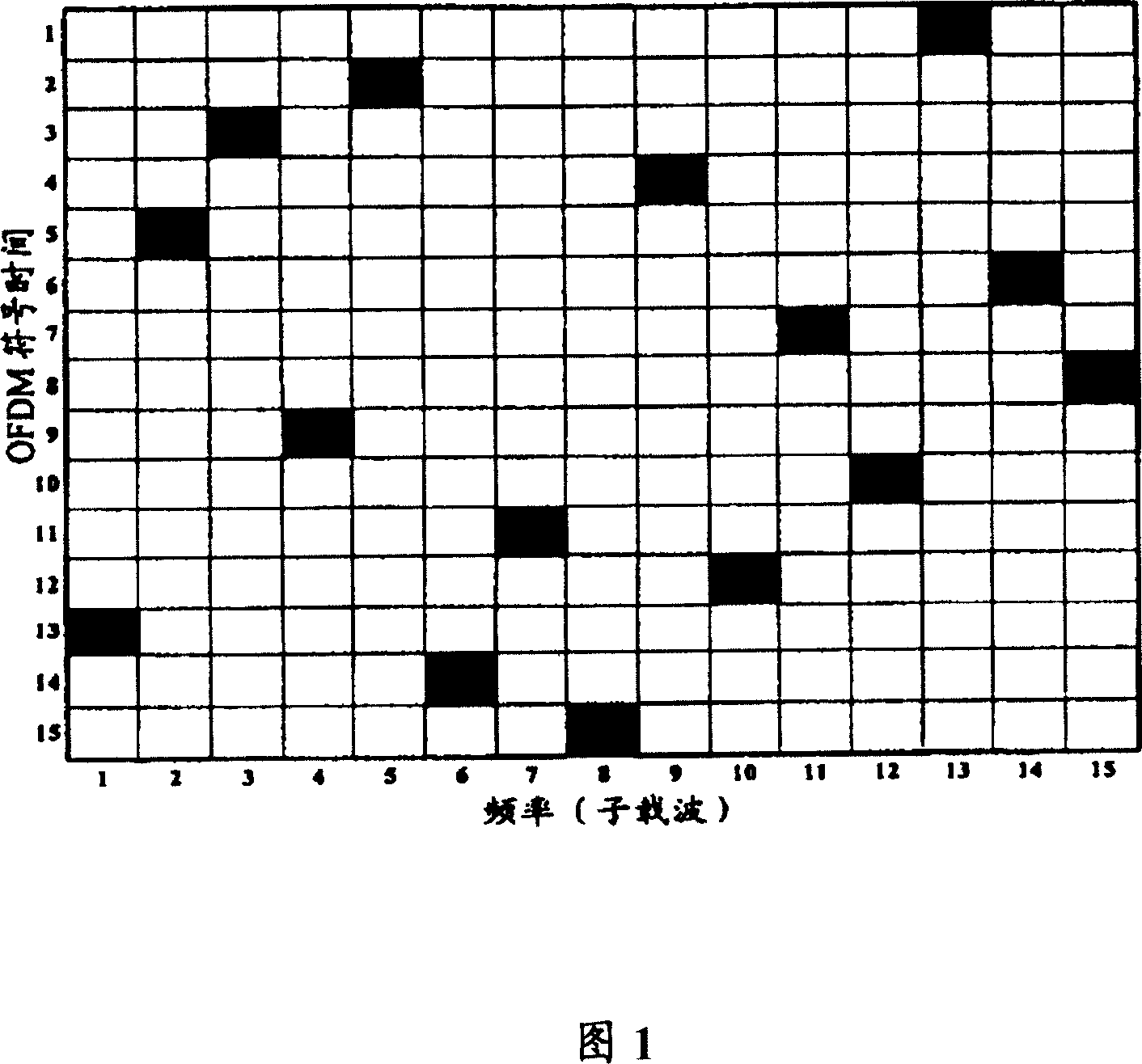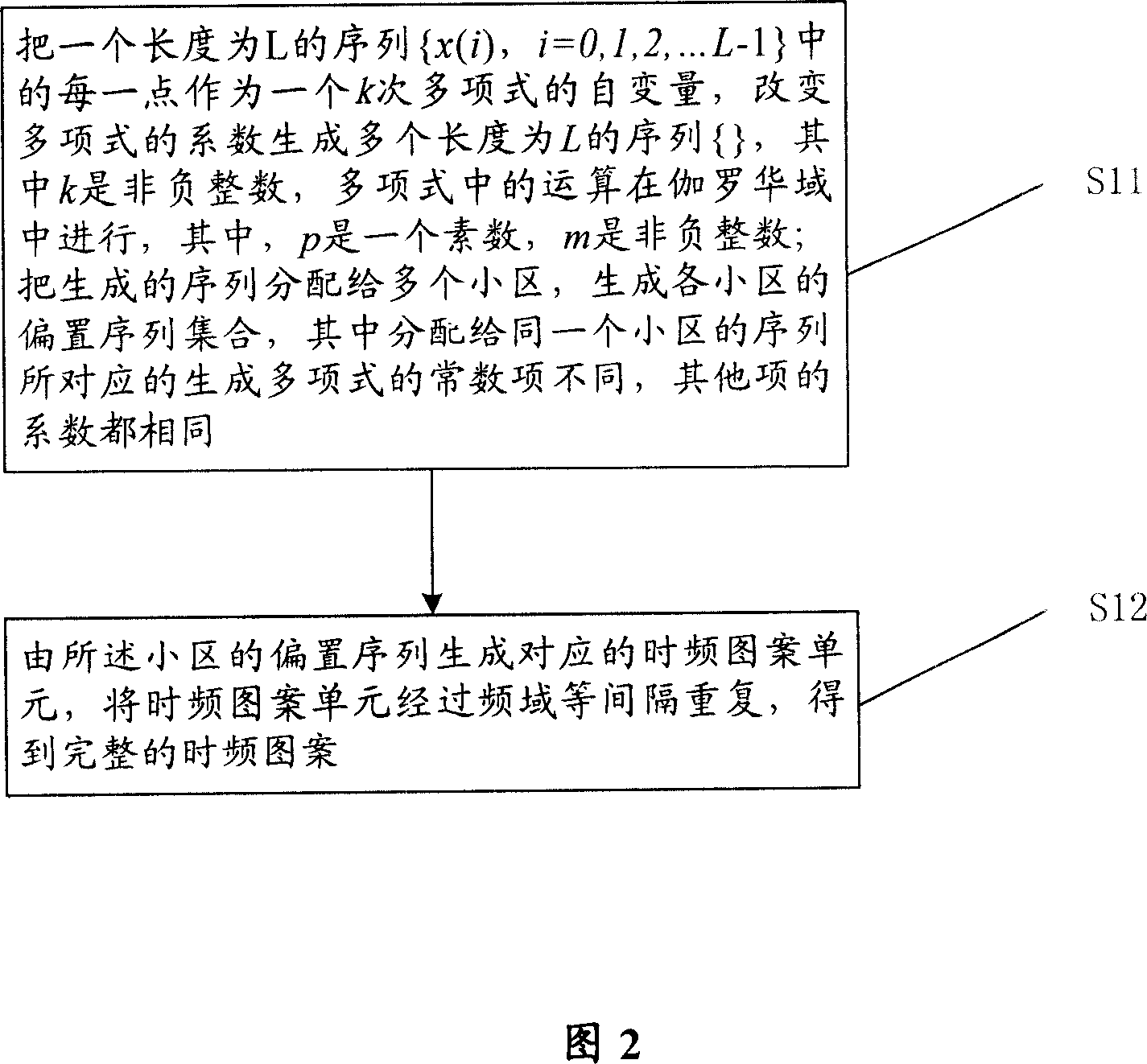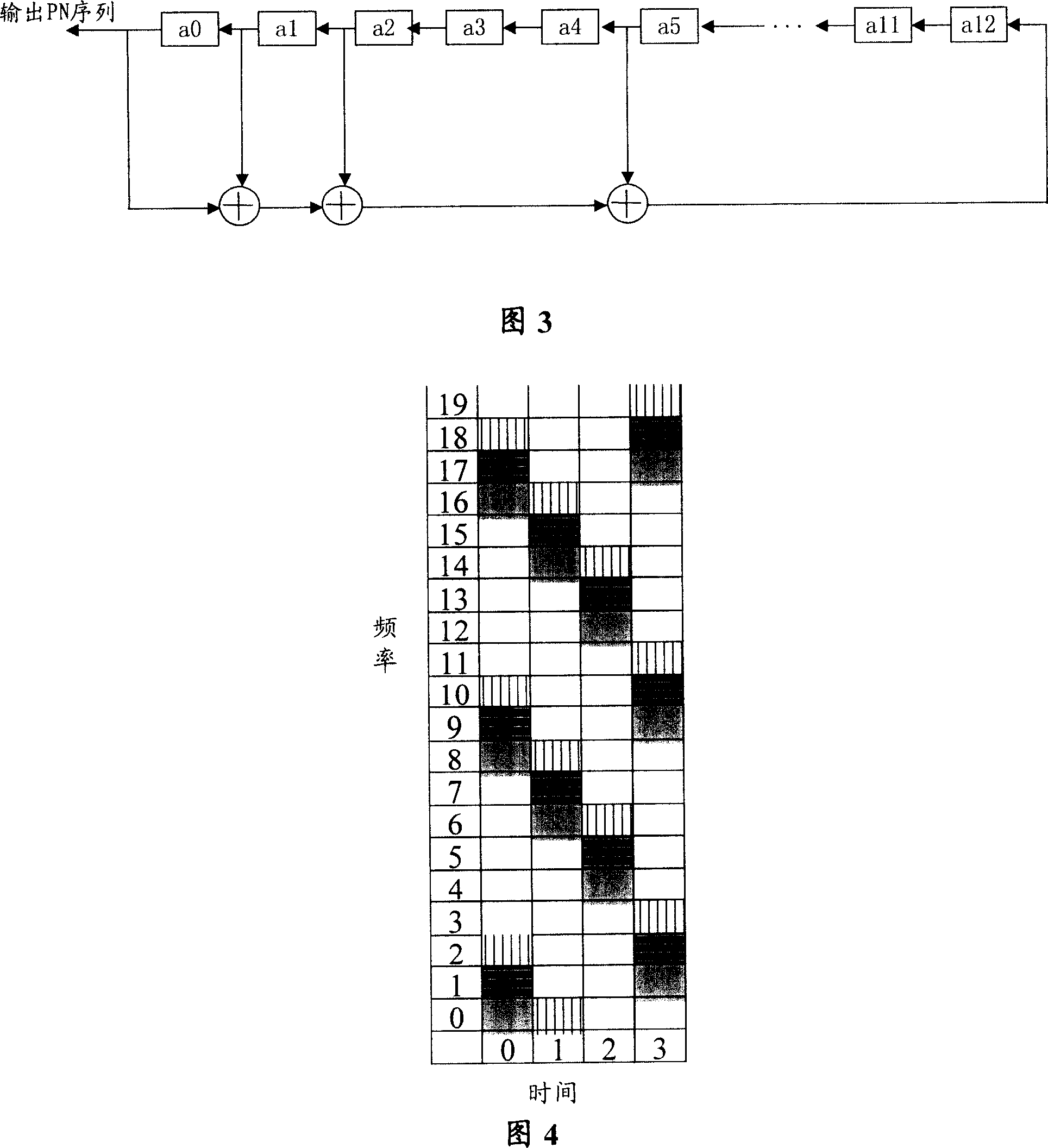Distribution method of time frequency resource
An allocation method and technology for time-frequency resources, applied in the field of time-frequency resource allocation, can solve the problem of not considering the average of interference between adjacent co-frequency cells, and achieve the effect of wide space
- Summary
- Abstract
- Description
- Claims
- Application Information
AI Technical Summary
Problems solved by technology
Method used
Image
Examples
Embodiment Construction
[0038] The present invention will be further described below in conjunction with the accompanying drawings.
[0039] Please refer to FIG. 2, which is a flowchart of a method for allocating time-frequency resources according to the present invention, the method comprising:
[0040] Step S11: by the polynomial f ( i ) = Σ j = 0 k n j x ( i ) j , i=0,1 , 2,...L-1, generate multiple sequences {f(i)}, where k is a non-negative integer, the L is the length of the sequence, the x(i) is a parametric equation, and the polynomial The multiplication and addition operations of are performed in Galois field GF(Q), where Q=p m , p is a prime number, m is a non-negative integer, n j is a se...
PUM
 Login to View More
Login to View More Abstract
Description
Claims
Application Information
 Login to View More
Login to View More - R&D
- Intellectual Property
- Life Sciences
- Materials
- Tech Scout
- Unparalleled Data Quality
- Higher Quality Content
- 60% Fewer Hallucinations
Browse by: Latest US Patents, China's latest patents, Technical Efficacy Thesaurus, Application Domain, Technology Topic, Popular Technical Reports.
© 2025 PatSnap. All rights reserved.Legal|Privacy policy|Modern Slavery Act Transparency Statement|Sitemap|About US| Contact US: help@patsnap.com



